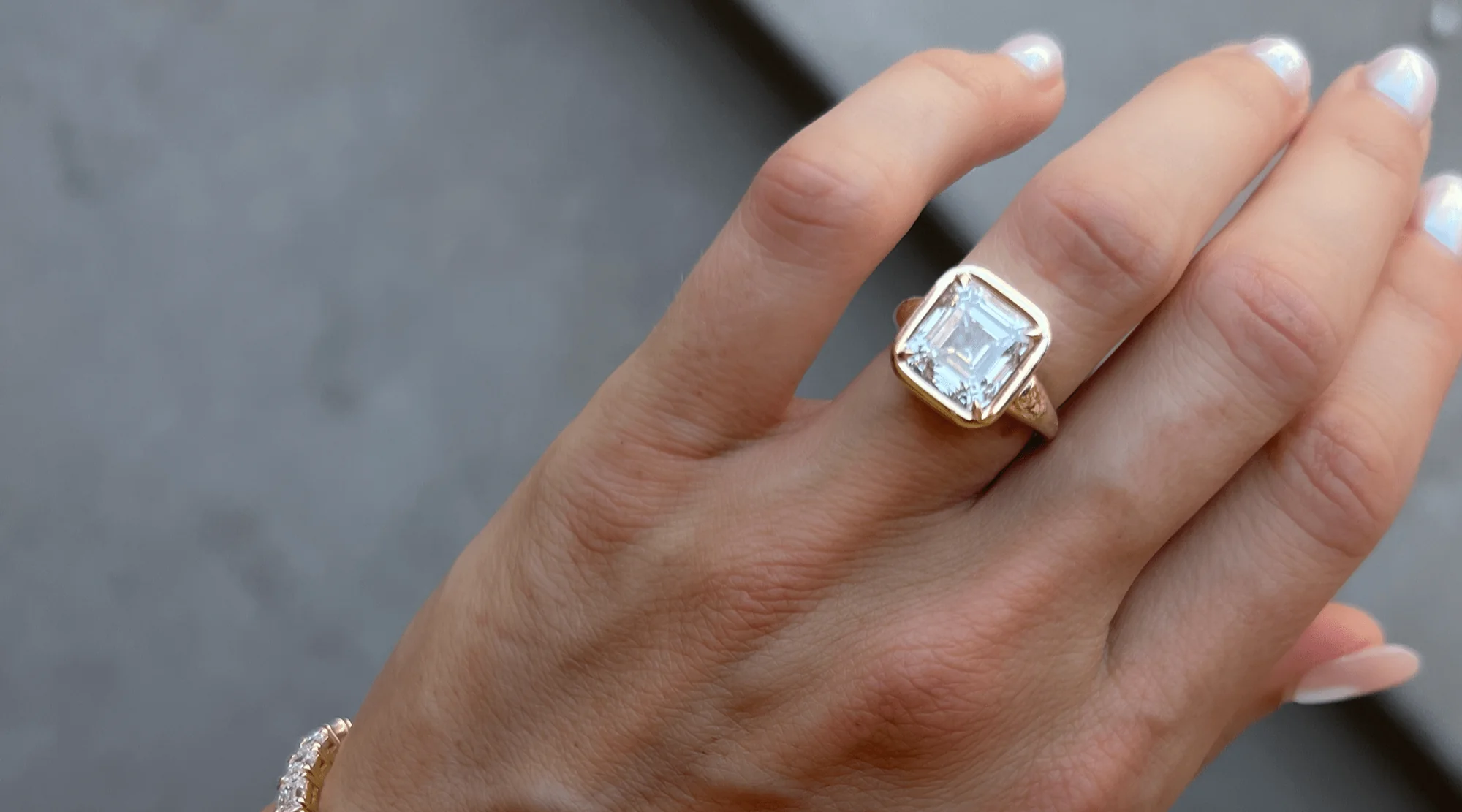Step cut diamonds have long been admired for their refined elegance and understated brilliance. Unlike the popular brilliant cuts, which maximize sparkle through numerous facets, step cut diamonds emphasize clarity and precision with their unique geometric lines. This article explores the history, characteristics, and modern appeal of step cut diamonds, with a particular focus on step cut emerald engagement rings and step cut diamond rings.
Historical Background
Step cut diamonds trace their origins back to ancient times when diamond cutting was a highly specialized art. The technique gained prominence during the Art Deco period of the 1920s and 1930s, an era known for its emphasis on geometric shapes and clean lines. Step cut diamonds perfectly encapsulated the aesthetic ideals of this period, making them a popular choice for engagement rings and other fine jewelry.
The name “step cut” derives from the parallel facets arranged in a stair-step pattern, which creates a hall-of-mirrors effect. This cut includes several variations, the most notable being the emerald cut and the Asscher cut. These cuts were particularly favored for their ability to showcase a diamond’s clarity and color, making them a symbol of sophistication and luxury.
Characteristics of Step Cut Diamonds
Step cut diamonds are distinguished by their rectangular or square shape and their parallel facets. These facets are larger and fewer in number compared to brilliant cuts, resulting in a more subdued sparkle but a striking display of clarity and depth. The key characteristics of step cut diamonds include:
- Shape and Facets: Step cut diamonds typically have straight, linear facets that run parallel to the girdle, creating a series of steps. The most common shapes are rectangular (emerald cut) and square (Asscher cut).
- Clarity and Color: Because step cut diamonds have larger, open facets, they are more transparent and revealing of the stone’s clarity. Inclusions and color are more noticeable, which is why high-quality stones are preferred for step cuts.
- Brilliance and Fire: While step cut diamonds do not exhibit the same level of brilliance (sparkle) and fire (dispersion of light) as brilliant cuts, their appeal lies in their elegant, mirror-like reflections and flashes of light.
- Symmetry and Proportions: The precision of the cut is crucial for step cut diamonds. Symmetry and well-proportioned facets enhance the overall appearance and light performance of the diamond.
Step Cut Emerald Engagement Rings
Among the various step cuts, the emerald cut stands out for its timeless appeal and sophisticated elegance. Named after the traditional cut used for emerald gemstones, the emerald cut diamond features a rectangular shape with cut corners and step-like facets. This cut highlights the diamond’s clarity and creates a mesmerizing hall-of-mirrors effect.
Step cut emerald engagement rings are a popular choice for those seeking a classic and elegant style. The elongated shape of the emerald cut diamond creates a flattering effect on the finger, making it a favorite among brides-to-be. These rings often feature minimalist settings that allow the diamond to take center stage, although they can also be adorned with side stones or intricate band designs for added flair.
The allure of step cut engagement rings lies in their ability to blend vintage charm with contemporary sophistication. Whether set in platinum, white gold, or yellow gold, these rings exude a sense of timeless beauty that appeals to modern brides looking for something unique yet classic.
Step Cut Diamond Rings
Step cut diamond rings, including those featuring emerald and Asscher cuts, offer a refined alternative to the more common brilliant cut diamond rings. These rings are celebrated for their understated elegance and the way they showcase the diamond’s clarity and quality. The larger, open facets of step cut diamonds provide a different kind of brilliance—one that is more subtle and sophisticated.
Step cut diamond rings are versatile and can be designed in various styles to suit different tastes. Some popular designs include:
- Solitaire Settings: A step cut diamond in a solitaire setting emphasizes the stone’s beauty and clarity, creating a timeless and elegant look.
- Three-Stone Rings: Step cut diamonds paired with smaller step cut or brilliant cut side stones add dimension and sparkle while maintaining a classic aesthetic.
- Halo Settings: Surrounding a step cut diamond with a halo of smaller diamonds enhances its brilliance and adds a touch of glamour.
- Vintage-Inspired Designs: Rings with intricate detailing, such as milgrain edges and filigree work, evoke the charm of vintage jewelry while highlighting the geometric beauty of step cut diamonds.
Modern Appeal and Popularity
In recent years, there has been a renewed interest in step cut diamonds, driven by a growing appreciation for vintage-inspired jewelry and clean, minimalist designs. Celebrities and influencers have also contributed to this trend by choosing step cut diamond rings for their engagements, sparking a surge in popularity.
The appeal of step cut diamonds extends beyond their aesthetic qualities. Their ability to showcase a diamond’s clarity and color makes them a preferred choice for those who value the intrinsic qualities of the stone. Additionally, step cut diamonds are often more affordable per carat compared to brilliant cuts, offering a more budget-friendly option without compromising on elegance and sophistication.
Conclusion
The classic geometry and refined elegance of step cut diamonds continue to captivate jewelry enthusiasts and brides-to-be around the world. Whether in the form of step cut emerald engagement rings or other step cut diamond rings, these stones offer a unique blend of vintage charm and modern sophistication. Their ability to highlight the clarity and quality of the diamond makes them a timeless choice for those seeking a piece of jewelry that exudes understated luxury.
As the appreciation for geometric designs and vintage-inspired jewelry grows, step cut diamonds are likely to remain a beloved choice for engagement rings and other fine jewelry. Their distinctive sparkle, precise craftsmanship, and timeless appeal ensure that they will continue to be cherished for generations to come.

